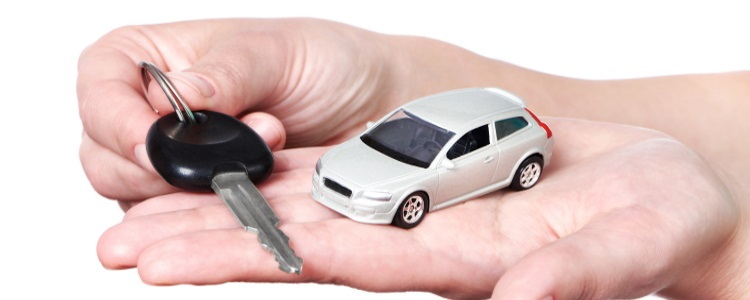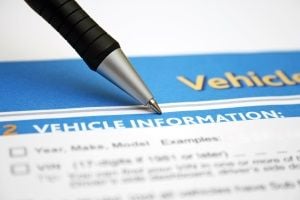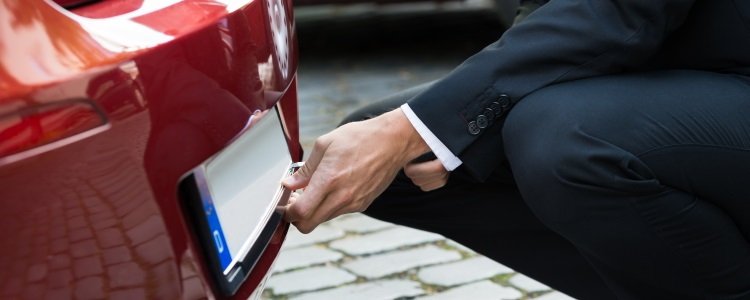In order to trade in your car, you must have the title ready and available for the dealership. Unless there’s a lienholder involved, dealers won’t accept a trade-in until they can see the title with your name on it. In fact, it’s illegal to sell or trade-in a vehicle without a title in most states.

Trading In A Car With No Title
Is There A Lienholder On Your Car?
 If you're making payments on a car loan or leasing your vehicle, there is typically a lienholder listed on your car title. A lienholder is the first named party on a title, and they retain the ownership of the vehicle and get paid first if there is a theft or accident involving the car. In many states, the lienholder keeps the title until you pay the vehicle off. However, in some states, a title may be sent to you even if you're still paying for the car.
If you're making payments on a car loan or leasing your vehicle, there is typically a lienholder listed on your car title. A lienholder is the first named party on a title, and they retain the ownership of the vehicle and get paid first if there is a theft or accident involving the car. In many states, the lienholder keeps the title until you pay the vehicle off. However, in some states, a title may be sent to you even if you're still paying for the car.
If an institution such as a bank has a lien on the title, you don’t need to worry about getting the title first if you plan on selling it to a dealership. The dealer contacts the lender and takes care of the transfer for you. Once the lien has been satisfied, you can go forward with the trade-in process and the dealership typically cuts you a check for any balance left over if there is equity in the vehicle. If the actual cash value is less than what you owe, you have to pay the difference out of pocket.
Replacing Your Lost Car Title
If you misplaced the original car title and it’s in your name, the good news is that getting a copy of the title is a simple procedure. All you need to do is head to your local DMV or Secretary of State and complete the appropriate paperwork. To get a copy of the title you typically need to have your Social Security Number, driver’s license, and vehicle identification number (VIN), but additional requirements can vary by state. Once you fill out the paperwork, you either get the title immediately or may need to wait a few weeks before it’s mailed – again, this depends on your state and its procedures.
Get A Title Transfer
If you don’t have the title (or your name isn’t listed on it) because of death or divorce, it gets a little more complicated. With a divorce, it’s important you have your attorney transfer the title to you during the divorce proceedings. But, if this isn’t possible, you need to have the titleholder sign the title over to you, and with a divorce, this isn’t always easy to do. Once the title has been signed over, you take the title and copy of the divorce decree to the DMV to officially make the change.
With a death, a title transfer can be either easy or a lengthy process. If you co-owned the vehicle, the title automatically transfers to you. If your name isn’t on the title and you use the car, the executor of the estate must assign the title to you. This can take some time to complete, but once the executor completes the process with the court, the vehicle is yours to trade in.
Being Prepared Is Key To Trading In Your Car
You can’t trade in a vehicle without a cleared title. Depending on where you live, you must either have it ready for the dealer when you’re ready to trade it in, or make sure the lienholder, the DMV, and the dealership have the title sorted out. Trading in a car doesn’t need to be complicated – just be prepared!

Senior Automotive Financing Editor
Meghan has been writing professionally for over 25 years. She is expertly versed in automotive special financing and pricing analysis, having published hundreds of articles on Auto Credit Express and its sister sites, CarsDirect, and The Car Connection. Read more
Suggested Posts For You
Receive Free Updates
Get the latest credit tips, resources and advice delivered straight to your inbox.













